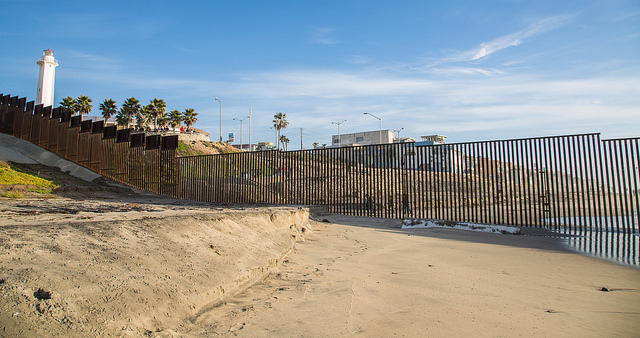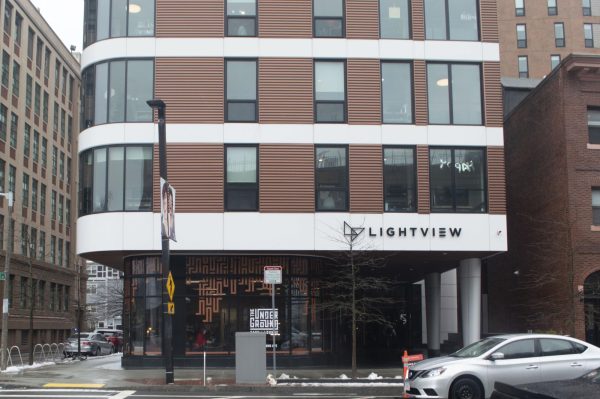Column: There’s more to the wall battle than politics
Just south of San Diego, this fence separates the United States and Mexico.
February 7, 2019
From where I live on the 17th floor of International Village, I see tennis courts behind Ruggles, surrounded by a fence. Considering the 35-day government shutdown that recently ended — for now — I can’t help but ponder the consequences physical barriers represent.
At the tennis courts, the fence signals a field of play; it keeps pedestrians and dog walkers out and keeps players and balls in. By all accounts, it’s convenient to have a fence there. The same fence used, per se, at a country club to separate people into groups is another story.
Our country has used walls and signs to separate groups before. A new wall would simply target a new group of humans beings; namely those humans fleeing hardship and violence in Central America.
When we read in the news about the president standing firm for 35 days, withholding paychecks and furloughing employees, we need to know how he has the power to do so.
Every year, Congress writes a bill that appropriates funding to be spent in every federal agency and institution. These funds become wages, investments, maintenance and whatever budget items the government may need. Every year since 2001, the government has run out early.
No president wants to be the one who signs a historically large budget into law. Normally, the House of Representatives writes bills to keep the government funded, which the Senate may revise before passing it themselves. The bills are eventually signed into law by the president, who may also veto the bill. This is where President Donald J. Trump found his opportunity to force Congress to act on his proposition.
This year, the House of Representatives flipped from a Republican to a Democratic majority after November’s midterm elections. During this shutdown, House Speaker Nancy Pelosi and Senate Minority Leader Chuck Schumer negotiated with Trump on the supplementary appropriations bill. Democrats wouldn’t produce a bill involving a border wall and Trump refused to sign a bill without it.
The last time the government shut down for an extended period was in December 2013, under President Barack Obama. While processes have not changed, there are many differences between these two shutdowns.
First, Obama refused to pass an appropriations bill that would raise the deficit ceiling to fully fund the Affordable Care Act, also known as Obamacare. Signed into law in 2010, it would not go into effect until 2014. The larger issue at hand was not the Affordable Care Act, but raising the debt ceiling. Ultimately, the Republican majority in Congress compromised.
The national debt as of Feb. 3 is nearly $22 trillion. There is no reason Congress would lose sleep over $5.7 billion. So why should the government remain shut down for 35 days, making it the longest shutdown in the history of the United States?
The true battle lies in what this wall represents. It would not keep stray dogs out of tennis courts or tennis balls from bludgeoning pedestrians. This wall would prompt our children to ask who resides on the other side and why we’ve separated them.
We don’t need a wall. We don’t need Americans rationing insulin or money for food. We certainly don’t need elderly elite politicians making decisions that will handicap our empathy tomorrow.
America is the land of the free. Nothing separates me from people approaching our southern border today except the color of my skin and the port my family entered through.
The president has referred to his desire for a wall as a solution to the “growing humanitarian crisis on our southern border.” I agree. This humanitarian issue deserves a humanitarian response, not a cold, rigid steel wall.


















